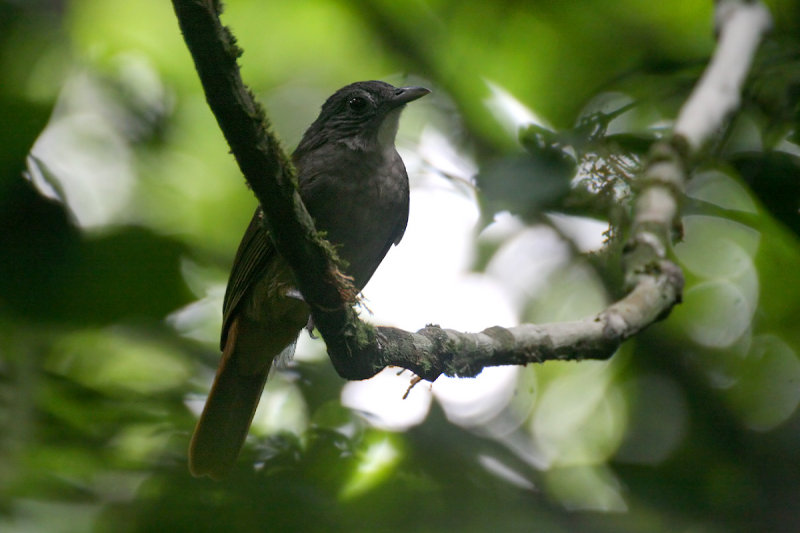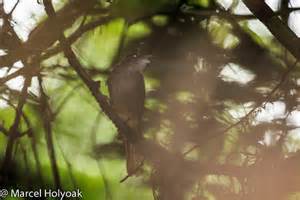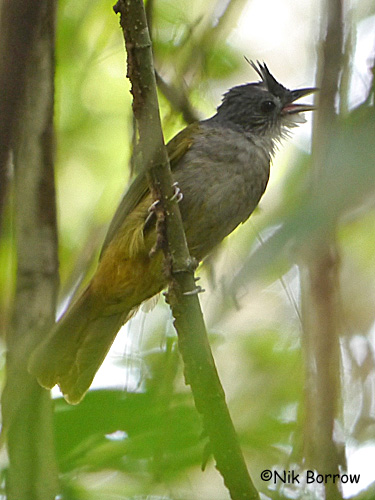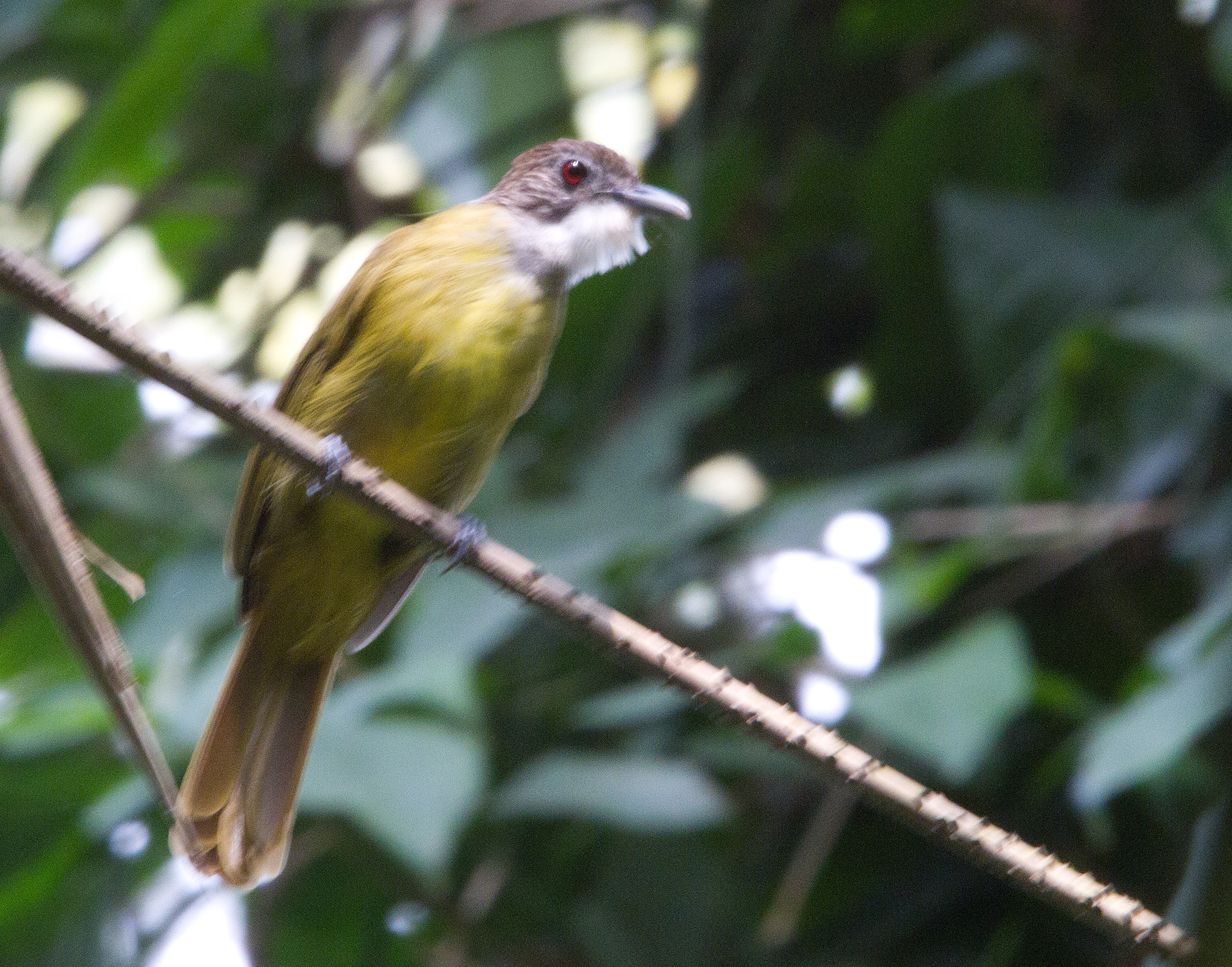
Criniger chloronotus
TAXONOMY
Trichophorus chloronotus Cassin, 1860, Gabon. Forms superspecies
with C. barbatus.
OTHER COMMON NAMES
French: Bulbul crinon oriental; German:Haarbьlbьl; Spanish:
Bulbul de Lomo Verde.
PHYSICAL CHARACTERISTICS
7.5–8.3 in (19–21 cm); 1.3–1.5 oz (38–45 g). Large bulbul;
breast and head gray, few black bristles on hindneck and mantle.
Mantle, rump, and wings yellow-green olive. Tail bright
rust-maroon. Chin and throat white, appears puffy and beardlike,
creamy belly. Sexes alike. Juvenile resembles adult.
DISTRIBUTION
Endemic central Africa; Cameroon, Gabon, southern Congo,
western Zaire, Angola, Central African Republic, western
Uganda.
HABITAT
Lowland rainforest, lower montane forest to 5,900 ft (1,800 m).
BEHAVIOR
Often occurs in groups; three to five birds, seem to unite by
song of leader. Group territory defended by chorus and displays
in which “beard” is puffed out. Mournful song of two
quavering notes.
FEEDING ECOLOGY AND DIET
Mainly eats insects and their eggs, some fruit.
REPRODUCTIVE BIOLOGY
Territorial, possibly a cooperative breeder. Solid cuplike nest
decorated with tropical epiphytic fern Microgramma owariensis,
which stays green through fledging. Usually two eggs, incubation
14 days by female only.
CONSERVATION STATUS
Not threatened. Fairly common in range.
SIGNIFICANCE TO HUMANS
None known.
Photo Gallery of - Eastern bearded greenbul




 Animalia Life
Animalia Life